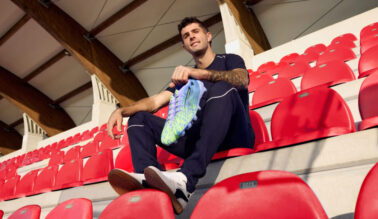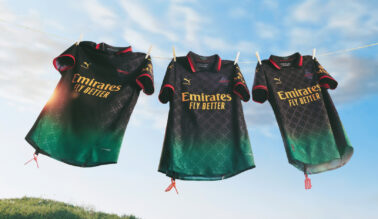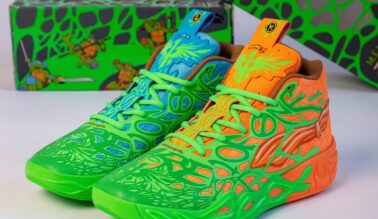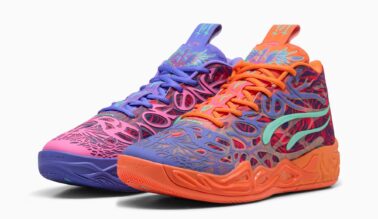This post may contain affiliate links. Please read our disclosure policy.
Research and movies, such as John Travolta’s Saturday Night Fever, reveal that platform shoes, wide-legged, flared jeans and the overall “disco look” basically summed up ’70s fashion. Well, that, three-piece suits, wide-collar shirts and wide-brim hats; all of which serve as representations of one of the most notable figures during that decade, Walt “Clyde” Frazier.
However, Frazier, considered the NBA’s original fashion icon, is just as synonymous with fashion as he is with the timeless PUMA Clyde, the 40+ year-old staple silhouette that will never fade. The Clyde is fashion, and fashion is the Clyde. We recently engaged in a light-hearted yet lively conversation with Frazier about the PUMA Clyde’s continuous reign, the evolution of fashion and his fondest memories of life in the ’70s.
Nice Kicks: You’re considered one of the NBA’s first fashion icons and you always thought futuristically in that regard, but did you foresee still being associated with the PUMA Clyde 40 years later?
Walt Frazier: Not at all. At the time when they approached me about the shoe, I was just happy to get paid. Back in the day, the brands were giving the athletes some shoes, but no one was actually getting paid to wear them. The shoe became so successful, and I’m just glad that PUMA decided to attach my name to such a classic shoe. I never envisioned still being associated with the Clyde some 40 years later.
Nice Kicks: Why do you think the Clyde sustained its popularity over time both on and off the court?
Frazier: I think it’s just a timeless design. We brought the shoe out in different materials and colors and that’s why it has become such a fashion-oriented shoe on and off the court. For one of the ads I did for PUMA, I was dressed in my mink coat, a wide-brim hat and my Clydes. I think a lot of guys saw that and took a liking to it. Ironically, that’s how the athletes dress today – a dressed-up look with sneakers.
Nice Kicks: The Clyde is still a very popular shoe now, but describe its initial claim to fame.
Frazier: I remember it being very successful in New York, but I never envisioned still being associated with the Clyde some 40 years later. In New York, New Jersey and Connecticut, we sold so many shoes that we didn’t even need the rest of the country. So, it was just a phenomenon how they couldn’t keep the shoes in the store. Everyone is always talking about Air Jordans, but before Air Jordans, there was the Clyde.
Nice Kicks: When did you first realize the worldwide admiration for the PUMA Clyde?
Frazier: Well, when I used to go around and make in-store appearances, the sales associate would always tell me that they couldn’t keep the shoe on the shelves. Everywhere I went, I saw people wearing them, but the break-dancers brought the shoe back in the ’80s in my opinion. I credit them for making the Clyde popular again. I would see so many of them wearing it in the ’80s, but none of them knew that I was the guy behind them.
Nice Kicks: And before the Clyde, there was the PUMA Basket. How did the transition from the Basket to the Clyde initially affect your on-court performance?
Frazier: Yeah, the PUMA Basket was heavy and not flexible at all. It was a clumsy shoe that I didn’t have too much success playing in. So then PUMA gave me the opportunity to help them design a new shoe for myself. I told them that I wanted a lighter shoe with more flexibility and that’s pretty much how the PUMA Clyde was born. It was something I was more accustomed to wearing on court.



